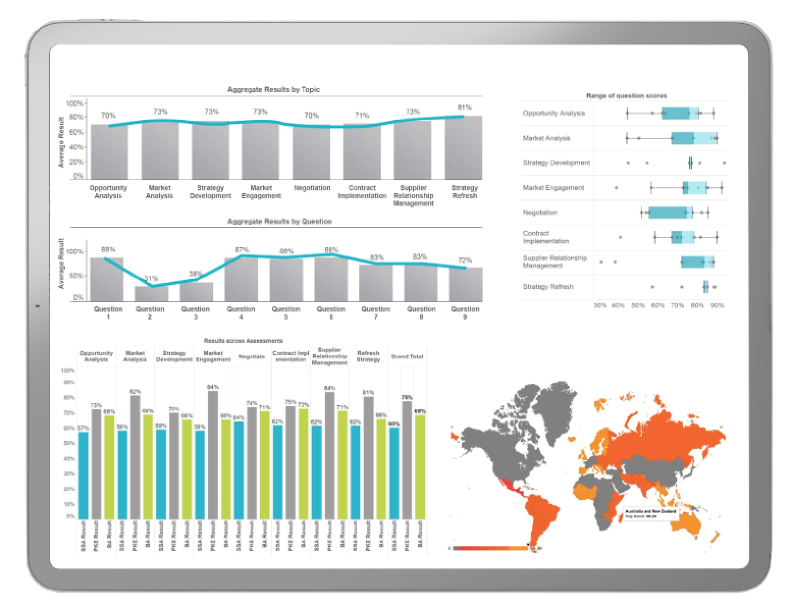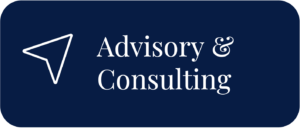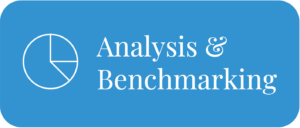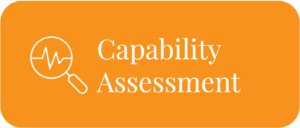The capability and composition of your Procurement and Supply team play a crucial role in determining the success and strategic impact of the function. A capable procurement team goes beyond simple cost-cutting measures, driving value creation through innovation, risk management, stakeholder engagement and sustainable practices.
This article explores the strategic importance of procurement capabilities, methods for assessing and developing team skills, and the challenges in managing procurement talent. We will examine how effective procurement strategies drive value creation through innovation, risk management, and sustainable practices, supported by real-world examples and practical insights.
Key areas of focus:
- The importance of capability in procurement
- Assessing and developing procurement team skills
- Balancing specialisation and versatility
- Challenges in managing procurement talent
- Core competencies for strategic value creation
The Importance of Capability in Procurement
Let’s talk about why having a top-notch procurement team isn’t just nice to have—it’s absolutely crucial. By understanding and leveraging the competencies within a procurement team, organisations can achieve operational excellence, foster innovation and maintain a competitive edge in a dynamic business environment.
Having a capable procurement team is essential for several key reasons. First, it drives strategic value creation. Skilled teams go beyond price negotiations to achieve cost savings, foster innovation, and add significant value to the organisation. They identify opportunities for improvement and implement strategies that positively impact the bottom line.
In terms of risk management, a capable team can foresee potential risks and mitigate them effectively. This proactive approach helps avoid costly disruptions and ensures business continuity.
Stakeholder management is another critical area. Procurement teams interact with various internal and external stakeholders. A proficient team can manage these relationships effectively, ensuring alignment with organisational goals and fostering collaboration.
During times of change, transition management becomes crucial. Whether it’s adopting new technologies or managing supplier transitions, a capable team can handle these shifts smoothly, minimising disruption and ensuring seamless integration.
Furthermore, innovation and sustainability are increasingly important in today’s business landscape. Procurement teams play a pivotal role in driving these initiatives through the supply chain, promoting sustainable practices, and encouraging innovative solutions from suppliers.
Finally, effective decision-making hinges on having a well-rounded team with diverse skills. This diversity ensures that decisions are well-informed, balanced, and aligned with the organisation’s strategic objectives.
According to Bain & Company, world-class procurement organisations can reduce a company’s purchasing cost base by an average of 8-12% and deliver additional annual savings of 2-3% (Bain & Company, 2018).
Balancing Specialisation vs. Versatility
Balancing specialisation and versatility within a procurement team is crucial for achieving optimal performance. Each approach has its pros and cons, and finding the right mix can significantly impact the team’s effectiveness and adaptability.
Specialisation: Fosters deep expertise but may create silos
Specialisation involves team members focusing on specific areas of expertise. The main advantage of this approach is the deep knowledge and proficiency it fosters. Specialists can handle complex tasks with greater efficiency and precision, driving high levels of expertise in critical procurement areas such as contract negotiation, supplier relationship management, or category management. However, specialisation can also lead to silos within the organisation. When team members are highly specialised, they may have limited understanding of other procurement areas, reducing cross-functional collaboration and potentially leading to communication barriers.
Versatility: Promotes flexibility but may lack depth in specific areas
On the other hand, versatility emphasises a broader skill set, where team members are capable of handling various tasks across different procurement functions. Versatile team members bring flexibility and adaptability to the organisation. They can quickly switch roles, manage diverse projects, and cover for one another during absences, ensuring continuous workflow. This adaptability is particularly valuable in dynamic environments where priorities can shift rapidly. However, the downside is that versatile team members may not achieve the same level of depth in any single area as specialists do. This can sometimes result in less efficiency or lower expertise in complex tasks.
Hybrid approach: Combine core specialists with versatile team members
Finding the right balance between specialisation and versatility depends on the organisation’s needs and goals. A procurement team might benefit from a core group of specialists who ensure high proficiency in critical areas, supported by versatile team members who provide flexibility and adaptability. This hybrid approach can help maintain deep expertise while promoting cross-functional collaboration and responsiveness to change.
Organisations should regularly assess their team’s structure and adjust the balance as needed. Implementing continuous training programs can help specialists gain broader skills, while encouraging versatile team members to deepen their knowledge in specific areas. By fostering an environment where both specialisation and versatility are valued, procurement teams can achieve a harmonious blend that drives both efficiency and innovation, ensuring the organisation is well-equipped to navigate the complexities of modern procurement.
Challenges in Managing People & Capability
Managing people and capability in procurement presents several challenges.
Skills shortage in specialised areas
First up, we’ve got the skills shortage. It’s like trying to find a needle in a haystack sometimes. The demand for procurement pros with specialised skills is through the roof, but the supply? Not so much. This mismatch can leave teams stretched thinner than a Vegemite sandwich, potentially putting the brakes on efficiency and effectiveness.
Salary pressures due to rising CPI
Then there’s the salary situation. With the Consumer Price Index making its best impression of a hot air balloon, employees are naturally looking for pay packets that keep pace. It’s a bit of a tug-of-war for organisations – trying to offer competitive salaries without blowing the budget. The risk? Losing your star players to the highest bidder.
Balancing capacity and capability in dynamic markets
Another challenge is balancing capacity and capability in dynamic market conditions. Fluctuating demand, supply chain disruptions, and evolving business needs require procurement teams to be both highly skilled and adaptable. Ensuring the team has the right mix of expertise and flexibility to handle these changes can be daunting.
Strategies to manage these procurement capability challenges
Addressing the challenges in managing procurement capabilities requires a strategic and multifaceted approach. Organizations must implement targeted strategies to develop their teams, attract and retain talent, and ensure they have the necessary expertise to meet evolving demands. Here are some effective strategies to manage these procurement capability challenges:
Implement continuous training programs
Implementing continuous training and development programs helps address skills shortages by upskilling existing employees and preparing them for future demands. Think of it as giving your team a knowledge booster shot. It helps address those skill gaps and prepares everyone for whatever curveballs are coming.
Offer competitive compensation packages and non-monetary benefits
Competitive compensation packages and non-monetary benefits, such as flexible work arrangements and professional growth opportunities, can attract and retain top talent despite rising CPI. It’s not just about the dollars and cents. Throw in some flexible work arrangements or professional growth opportunities, and you’ve got a recipe for attracting and keeping top talent.
Leverage procurement consultants for specialised expertise
Additionally, leveraging procurement consultants can provide the necessary capacity during peak periods without long-term financial commitments. These consultants bring specialised expertise and fresh perspectives, enabling organisations to tackle complex projects and navigate market fluctuations effectively. By integrating consultants into the team for specific initiatives, companies can boost their procurement capabilities and ensure critical projects are completed on time and within budget. This flexible approach allows organisations to scale their resources according to demand, maintaining operational efficiency and strategic focus.
Conduct regular skills assessments
Finally, regular skills assessments and strategic workforce planning ensure the team remains well-balanced and capable of meeting the organisation’s evolving needs. Keep your finger on the pulse of your team’s capabilities. It’s like doing a health check to make sure you’ve got the right mix of skills to meet your organisation’s changing needs.
Practical tip: Develop a mentorship program pairing experienced specialists with versatile team members to foster knowledge sharing and skill development.
Assessing Procurement Team Capability
Let’s dive into the nitty-gritty of assessing your procurement team’s capabilities. Think of it as taking your team’s temperature – you want to know what’s hot and what could use some warming up.
A skills gap analysis is your thermometer here. It’s about laying out what your team can do now versus what they need to do to be at the top of their game. This assessment can be conducted at individual, group, or organization-wide levels, providing a comprehensive view of your procurement function’s strengths and weaknesses.
The process involves several key steps:
- Define the scope and goals of your analysis. Who’s in? Procurement? Contract Management? Category Managers? Supply Chain?
- Develop a capability framework. For procurement, this might include dimensions such as opportunity analysis, market analysis, strategy development, negotiation, and supplier relationship management.
- Choose your assessment methods. Tools like the Procurement Skills Assessment (PSA) and Procurement Knowledge Evaluation (PKE) act as high-tech scanners for your team’s abilities. They evaluate not just technical skills but also soft skills like supplier relationship management and stakeholder navigation.
- Conduct the assessments. This may include knowledge evaluations, skills self-assessments, and behavioral assessments.
- Analyse the results. Use visualisations like graphs and charts to clearly identify strengths and gaps.
- Develop a plan to close the gaps. This could involve targeted training, mentoring, or experiential learning opportunities.

Remember, the business world doesn’t sit still, and neither should your team’s skills. Regular check-ins on capabilities are crucial. It’s like updating your smartphone – you don’t want to be stuck with yesterday’s model when everyone else is running the latest version.
It’s about creating a team that doesn’t just keep up with change but stays ahead of the curve. Whether it’s mastering e-auctions today or navigating blockchain in supply chains tomorrow, a well-assessed and continuously developed team will be ready for anything.
Practical tip: Implement an annual skills assessment program, followed by targeted training initiatives to address identified gaps.
Competencies for Strategic Value Creation
Skilled procurement teams play a critical role in driving cost savings that extend far beyond simple price negotiations. By employing advanced sourcing strategies, such as strategic sourcing, category management, and supplier relationship management, these teams can uncover significant savings opportunities. For instance, they might consolidate spending across the organisation to leverage volume discounts, negotiate long-term contracts that lock in favorable terms, or identify alternative suppliers that offer better value.
Cost Savings Beyond Price Negotiations
Beyond cost savings, skilled procurement teams are instrumental in fostering innovation and creating value. They do this by collaborating closely with suppliers to co-create new products or processes that improve efficiency and quality. This collaboration can lead to innovations that differentiate the company in the market, such as eco-friendly packaging solutions or cutting-edge technology components.
Driving Sustainability
Additionally, procurement teams drive value by implementing sustainable procurement practices that not only reduce environmental impact but also resonate with consumers and stakeholders increasingly concerned about sustainability.
Fostering Innovation
Let’s look at some real-world examples that show how strategic procurement is changing the game:
- Driving Innovation: Take InDemand, for instance. They didn’t just work with suppliers; they practically made them part of the family. By getting suppliers involved in product development, they created solutions that hit the market’s sweet spot. It’s like having a whole team of external brains working for you.
- Going Green: Over in Catalonia, they’re using procurement to fight air pollution. They’re not just buying stuff; they’re buying into a cleaner future with low-emission vehicles and sustainable materials. It’s procurement with a conscience, and it’s making a real difference.
- Boosting Efficiency: Amason – you might have heard of them – took efficiency to a whole new level with their global procurement strategy. They streamlined everything, from who they buy from to how they make deals. The result? Savings that would make even the most hardened accountant crack a smile.
- Smooth Transitions: When Cambridge University Hospitals NHS Foundation Trust needed to switch IT providers, their procurement team handled it like pros. They made sure everything kept running smoothly, proving that good procurement isn’t just about buying stuff – it’s about managing relationships and keeping the show on the road.
These examples underscore the transformative impact of strategic procurement. It’s about seeing the big picture and making moves that benefit the whole organisation. By leveraging advanced sourcing strategies and fostering supplier collaboration, organisations can drive innovation, promote sustainability, enhance operational efficiency, and manage supplier transitions effectively.
Competencies for Stakeholder Management
Procurement teams are the ultimate mediators, bridging the gap between what the company needs and what suppliers can offer. Effective stakeholder management requires a combination of technical and interpersonal skills, such as negotiation, communication, and relationship-building.
Understanding Internal and External Stakeholders
First up, let’s talk about internal stakeholders. These are your workmates from finance, operations, marketing – you name it. Procurement teams must understand these stakeholders’ needs and objectives, aligning procurement strategies with overall business goals. Now, external stakeholders – that’s your suppliers. This is where procurement teams really shine. They’re cultivating partnerships that can drive innovation and efficiency. It’s about understanding the supplier’s world and finding that sweet spot where both parties win.
Effective stakeholder management relies on several key skills.
- Context analysis: Understanding the supplier’s business environment is crucial. Piecing together clues about market conditions, competition, and potential risks is essential for informed decision-making. The same applies to your own organisation. By analysing spending patterns, procurement teams can pinpoint areas where costs can be reduced, consolidate suppliers, and negotiate better terms. Spend analysis also helps in understanding supplier performance and identifying risks, enabling more informed and strategic decision-making, which enhances stakeholder trust and collaboration.
- Power dynamics: Knowing the balance of power in any relationship is key. Sometimes you’re holding all the cards; sometimes they are. The trick is navigating this dynamic to get the best outcome for everyone. Understanding this balance helps in negotiating terms that are favorable to your organisation while maintaining healthy supplier relationships.
- Influence: This isn’t about schmoosing; it’s about building genuine relationships. It’s the difference between a supplier seeing you as just another client versus a valued partner. Effective influence and charm foster strong, cooperative relationships with stakeholders, ensuring their support and commitment. For more information on learning Stakeholder Management & Influence see this exceptional course.
- Segmentation smarts: Not all suppliers are created equal. Using a value-risk approach to segment relationships helps you focus your energy where it matters most. Prioritising high-value, high-risk suppliers ensures that critical relationships are managed with the attention and resources they require, leading to better stakeholder outcomes.
- Collaboration is key: Developing joint improvement programs with suppliers can be a game-changer. It’s about finding those win-win opportunities that benefit both parties. Collaborative efforts strengthen partnerships and drive mutual growth, enhancing stakeholder engagement and satisfaction.
- Performance management: This isn’t about cracking the whip. It’s about setting clear expectations, providing constructive feedback, and working together to solve problems when they arise. Effective performance management ensures that suppliers meet their commitments, which in turn boosts stakeholder confidence and trust.
- Analytical tools: RACI charts, root cause analysis, affinity mapping – thesearen’t just fancy terms. They’re practical tools that can clarify responsibilities and drive continuous improvement. Utilising these tools effectively enhances transparency and accountability, which are critical for successful stakeholder management.
Building and maintaining these relationships isn’t just part of the job – it’s the heart of it.
Practical tip: Develop a stakeholder mapping tool to visualise and prioritise key relationships, guiding resource allocation and engagement strategies.
Competencies for Transition Management
Managing transitions in procurement is crucial and challenging, impacting both supplier exits and onboarding. Effective transition management ensures continuity and mitigates risks associated with changes in the supplier base.
Supplier exits must be handled carefully, whether they are critical or non-critical. On the supplier side, it involves clear communication, ensuring a smooth handover, and addressing any final obligations. On the company side, it requires detailed planning to avoid disruptions, maintaining service levels, and protecting intellectual property.
Supplier onboarding is equally critical. It involves rigorous vetting to reduce risks, informing stakeholders about the new supplier, and integrating them into procurement-to-pay (P2P) systems. Effective onboarding ensures the supplier understands company standards, compliance requirements, and performance expectations.
The skills and capabilities needed for smooth transitions include strong project management, effective communication, and risk assessment. Procurement professionals must be adept at stakeholder management, ensuring all parties are informed and aligned. They must also have technical knowledge to integrate new suppliers into existing systems seamlessly and the ability to anticipate and mitigate potential issues.
Competencies for Innovation and Sustainability
Driving innovation through the supply chain and leading sustainability initiatives are increasingly critical roles for procurement teams. These efforts not only enhance competitive advantage but also align with broader organisational goals and societal expectations.
Innovation in the supply chain involves collaborating with suppliers to develop new products, processes, or services that enhance efficiency, reduce costs, or offer unique market propositions. Procurement teams play a pivotal role by identifying innovative suppliers, fostering long-term partnerships, and facilitating joint development projects. This proactive approach can lead to breakthroughs such as advanced materials, sustainable packaging, or digital procurement solutions that streamline operations.
Sustainability initiatives are another vital area where procurement can drive significant impact. By integrating sustainability criteria into supplier selection and evaluation, procurement teams can promote environmentally friendly practices and ethical labor standards. This includes sourcing from suppliers with strong sustainability records, reducing carbon footprints, and ensuring compliance with social and environmental regulations. Procurement’s role extends to advocating for sustainable practices within the organisation and among suppliers, thereby embedding sustainability into the core business strategy.
Leading innovation and sustainability projects requires a diverse skill set. Procurement professionals must possess strong strategic thinking and the ability to foresee market trends and technological advancements. Relationship management skills are crucial for fostering collaboration and securing commitment from both internal and external stakeholders. Additionally, project management capabilities ensure initiatives are executed effectively and deliver intended outcomes. A deep understanding of sustainability principles and regulatory requirements is essential to drive compliance and ethical practices.
By leveraging these skills, procurement teams can lead the way in driving innovation and sustainability, creating value that extends beyond cost savings to include positive environmental and social impact. This positions the organisation as a responsible and forward-thinking entity, capable of thriving in an increasingly complex and demanding global market.
Competencies for Decision Making
Effective decision-making in procurement is critical, and having a capable team significantly enhances this process. The quality of decisions made by procurement teams directly impacts cost management, supplier relationships, and overall strategic success. Poor decisions can lead to significant ramifications, including financial losses, supply chain disruptions, and damage to the organisation’s reputation. For instance, choosing an unreliable supplier could result in production delays, increased costs, and potential loss of market share.
A team with diverse skills contributes to better decision-making. Diversity in skills and perspectives ensures that decisions are well-rounded and consider various aspects of procurement. Technical expertise provides the necessary knowledge for evaluating supplier capabilities and contract terms. Analytical skills help in assessing data and forecasting trends, while strong interpersonal skills facilitate negotiations and stakeholder engagement. This blend of capabilities enables a more comprehensive evaluation of options and more strategic choices.
Example 1: Cost Savings through Strategic Sourcing A manufacturing company faced rising raw material costs. The procurement team, leveraging their market analysis and negotiation skills, identified alternative suppliers offering similar quality materials at lower prices. By diversifying their supplier base and negotiating long-term contracts, the company achieved substantial cost savings and reduced dependency on a single supplier.
Example 2: Risk Mitigation in Supply Chain Management During a geopolitical crisis, a global electronics firm faced potential disruptions in their supply chain. The procurement team conducted a risk assessment and identified high-risk suppliers. They proactively sourced alternative suppliers from stable regions and implemented a dual-sourcing strategy. This decision ensured continuous supply, mitigated risks, and maintained production schedules.
Example 3: Sustainability Integration A retail chain aimed to enhance its sustainability profile. The procurement team, combining their knowledge of sustainable practices and supplier management, collaborated with suppliers to source eco-friendly products and materials. This initiative not only improved the company’s environmental footprint but also attracted eco-conscious consumers, boosting sales and brand reputation.
The strategic value of a capable procurement team is undeniable in today’s complex business landscape. By focusing on developing key competencies, balancing specialisation and versatility, and addressing challenges proactively, organisations can build procurement teams that drive innovation, promote sustainability, and contribute significantly to overall business success.
As procurement continues to evolve, staying ahead of emerging trends and technologies will be crucial. Teams that can adapt to change, leverage data-driven insights, and maintain strong stakeholder relationships will be best positioned to deliver strategic value and maintain a competitive edge in the global marketplace.
By implementing the strategies and insights discussed in this article, organisations can transform their procurement functions from cost centers to strategic value drivers, ensuring long-term growth and success in an increasingly complex and dynamic business environment.








